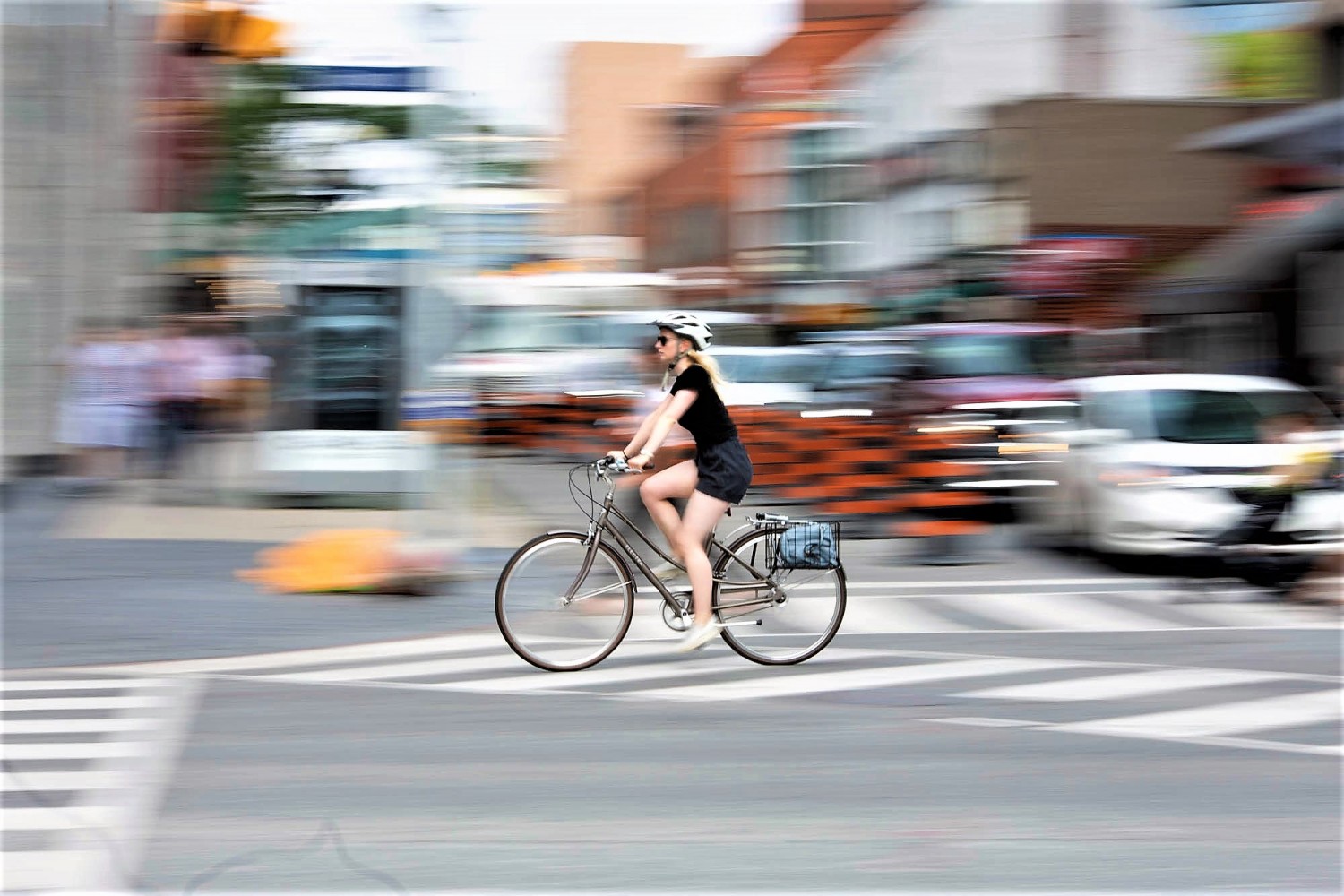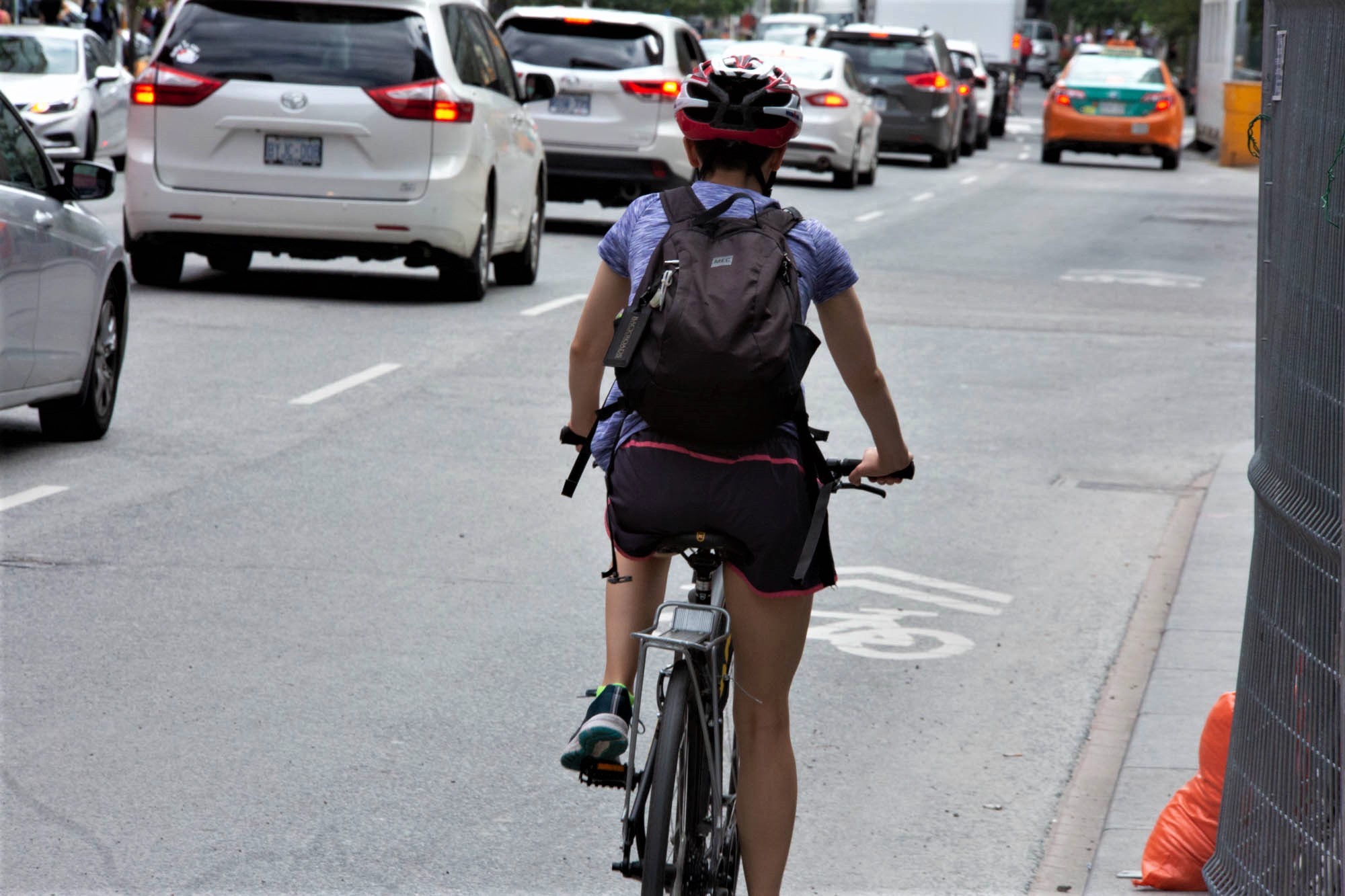
Lack of cycling infrastructure leaves Mississauga way behind global movement
There is a growing community of cyclists in Mississauga but the city’s lack of infrastructure is a major barrier to those who want to ditch their car for better commuting options.
While many residents of all ages tear up local cul de sacs and crescents every weekend, come rain or shine, for a fun ride, according to 2016 census data, only about 1,140 people use biking as a mode of transportation in Mississauga. That represented just 0.15 percent of the city’s population. Across all of Canada’s Census Metropolitan areas, the percentage of people who used cycling as a main mode of transportation was more than ten times higher than Mississauga’s rate.
Toronto had about thirty times more cyclists who use biking as a main mode of transportation than Mississauga, though its population was only four times bigger.
Can this change, in a city that seems reluctant to move away from its reliance on the car?

The Mississauga Cycles organization is trying to grow participation across the city. (Natasha O’Neill/The Pointer)
The Mississauga Cycles project led a bike giveaway on October 17 with Peel Multicultural Council (PMC) and Culturelink. The event, which is in its third year, gave away 45 refurbished bikes from the Region of Peel’s Community Recycling Centres to families that have recently settled in the region.
But many of the bikes, especially for children, are meant for casual use, usually close to home, and even if they inspire more serious cycling later in life, without the proper infrastructure a lot of residents in the city don’t use their two wheelers beyond the neighbourhood.
Sol Avalos, brought two of her four children, Megan, 4, and Nathan, 3, to pick out bikes for them. Avalos is an active cyclist and often goes on rides with her eldest son, both Megan and Nathan are itching to join their mom and older sibling on the longer outings.
“It’s very awesome,” Avalos said of the event. “It’s very nice for them to get the opportunity to get a bike and learn how to use it.”
The family recently moved to Mississauga from Mexico. Events like these connect newcomers to their community and are extremely beneficial for children, not only to make them feel welcome and introduce them to new social networks, but to teach them the importance of contributing to a clean, green environment for everybody.

Sol Avalos, left, with kids Megan and Nathan and Ward 9 Councillor Pat Saito who is a strong advocate for bike safety. (Natasha O’Neill/The Pointer)
Making biking accessible will grow the cycling base.
But Mississauga will need to update its cycling infrastructure to make people feel safe and provide a true alternative to the car, even for local commuting. This requires roadways, bridges and other surface infrastructure to be operating in peak performance, while new designated cycling lanes and local paths form the backbone of a future transportation network that will only emerge if it's built… and maintained.
Roadways are a core piece of infrastructure which make up one of the two largest asset groups the City needs to maintain. With a replacement value of $2.9 billion and a length of 5,640 kilometres, pavement looks an awful lot more valuable than residents give it credit for. Under the umbrella of roadways, the culvert and bridges that connect the various Mississauga neighbourhoods have a replacement value of $978 million.
Anyone who lives and works in the City knows how car-centric Mississauga is. As soon as a road starts to show its age, residents let their local councillor know about it.
It is increasingly important to keep roads maintained for cyclists as well, who are more likely to lose control biking due to a pothole or other obstacle than a driver. But with the pandemic causing an explosion in cycling in cities across Canada, with people looking for more opportunities to get outside and stay healthy, Mississauga’s lack of infrastructure or poorly maintained surfaces in some parts of the city, are a barrier preventing residents from joining the global cycling movement.
This becomes a problem when the city has to prioritize certain projects over others, leaving the potholes to increase.
The lack of cycling lanes is another obstacle. According to the City’s 2018 “Cycling Master Plan” Mississauga had 51 kilometres of bike lanes with plans to add another 56 in the coming years. This compares to roughly 587 kilometres of on-street biking infrastructure in Toronto in 2018, with plans to add more than 500 kilometres as part of a ten-year plan launched in 2016.

Though it has been criticized for stalling on its cycling plan, the City of Toronto's designated infrastructure has lapped Mississauga many times. (The Pointer file photo)
Both cities have been criticized for falling short on their approved commitments to expanding cycling infrastructure, though Mississauga’s failures come at a time when so many younger residents seem interested in finding alternatives to the car, but have few options.
In reality, the city adds project after project to a list called “when we have more money” and prioritizes the desperately decaying infrastructure first, leaving some infrastructure projects left for another day when money can be found.
The resulting infrastructure gap continues to grow.
The 2021 budget totalled the gap at $291 million, the amount the City needs just to replace or repair old infrastructure; an amount Mississauga does not have.
The figure has been growing rapidly over the past decade. Seven years ago, Mississauga had an infrastructure gap of $60 million.
Adding cycling infrastructure, on top of the need to replace aging pavement, is a decision for elected officials who are already wrestling with severe budgetary pressures.
To maintain all city infrastructure in a state of good repair and invest in new assets from 2019 to 2028 the city plans on spending $2.8 billion from the capital program.
It’s unclear what percentage of this will benefit cyclists, either through the improvements to roads that can be used or the addition of more designated lanes for biking.
Despite the worrying numbers Mayor Bonnie Crombie is optimistic about potential transfers from the recently elected Federal Government, as a way the City can decrease its infrastructure gap.
Mississauga’s Mayor reiterated her statement on how the funding from upper tiered levels of government needs to be “sustainable, long term and reliable.” But it’s unclear how such potential sustainable funding might be used to address issues such as cycling and climate change, which are directly linked.
Mississauga has pledged through a resolution of council to dramatically curtail emissions caused by municipal services and operations, but visionary plans around initiatives such as increased cycling participation, complete with funding commitments to achieve such goals, have not been brought together.
In a city designed for the car, with vast tracts of asphalt that move large volumes of traffic across multiple lanes, cyclists have been squeezed out.
Commercial truck use on city thoroughfares has presented a particular challenge, especially in the absence of designated lanes for cyclists who instead find themselves competing with these giant transport vehicles in a dangerous balancing act, for those brave enough to even try.
Councillor Pat Saito has expressed her disappointment over the slow pace of work to add biking lanes, particularly in parts of the city where cyclists find it most difficult.
Commenting on the Cycling Master Plan in the summer, she said the pandemic presented a real opportunity to capitalize on the popularity of bicycling.
“I am really disappointed in what we have done or haven't done in providing safe cycling access on roads,” she told The Pointer. “I've been asking for over a year for bollards to be installed along 10th Line because every time I drive on that road, there are cars driving in the bike lane.”
Saito also mentioned the southern parts of Derry Road where the bike lane is very narrow causing cyclists to ride on the sidewalk.
“I can't blame them. I don't feel safe riding my bike on 10th Line, because of the behaviour of the traffic,” she said.
Enforcement of the small stretches of cycling lanes the city does maintain is an issue that could potentially improve uptake.
But for the Avalos family and many others like them who want to use their bikes in Mississauga, without proper infrastructure and with the deterioration of roadways, they won’t be able to join the global movement toward a much greener way to travel.
Email: [email protected]
Twitter: @taasha__15
COVID-19 is impacting all Canadians. At a time when vital public information is needed by everyone, The Pointer has taken down our paywall on all stories relating to the pandemic and those of public interest to ensure every resident of Brampton and Mississauga has access to the facts. For those who are able, we encourage you to consider a subscription. This will help us report on important public interest issues the community needs to know about now more than ever. You can register for a 30-day free trial HERE. Thereafter, The Pointer will charge $10 a month and you can cancel any time right on the website. Thank you
Submit a correction about this story


